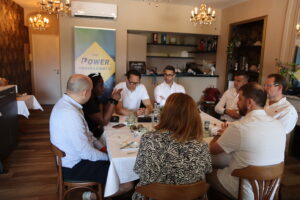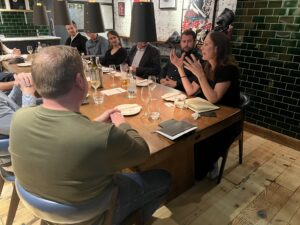The roundtable, chaired by New Digital Age Editor and Bluestripe Partner Justin Pearse, included contributions from Jason Creane, Commercial Director, Permutive; Chetan Damani, MD, TVGuide.co.uk; Jane Wolfson, Hearst UK, Chief Commercial Officer; Emily Brewer, Head of Publishing, Teads; Piers North, Group Digital Director, Reach PLC, Louise Crosby, Digital Sales Director, News UK; Chloe Grutchfield, Co-Founder, Redbud Media.
Should publishers rebrand themselves as data businesses in a bid to be taken more seriously and fight for a larger share of the digital advertising pie?
Jason Creane, Permutive EMEA Commercial Director, mooted the change at a roundtable discussing the future of publishing. He urged the table to forget the term publisher, as such businesses increasingly transform into data-centric propositions hugely valuable to advertisers.
A conversation with one publisher had prompted this controversial thought. “He wanted people to stop thinking of publishers as being under threat and to start thinking about them in a way they could flex their assets,” added Creane.
“Strategically, what is stopping you from growing revenue? How do we diversify in more ways? The answer is data,” he said. He points to capturing moments in a customer journey as an example. “What’s the probability of the customer converting at that moment? How can we convert them in a faster way?”
Teads UK head of publishing Emily Brewer said data was intrinsic to her business and its appeal to both publishers and advertisers. “We evolved as a business to become advertiser-centric through our amazing publisher partners, as opposed to simply a platform of great formats,” she said.
She sympathised with those who pointed to Facebook being able to offer “super-low” CPMs that “wouldn’t be enough to sustain a publisher”, adding that Teads was evolving to satisfy increasing advertiser desire to buy not on CPMs but outcome-based metrics.
The data dilemma
Yet the data dilemma meant that even the biggest publishers were not big enough, said Piers North, Reach Group Digital Director. Scale is why independent platforms such as Teads are such an integral part of many publishers’ assets and why The Ozone Project was created.
The Ozone Project, which also includes News UK, The Guardian and The Telegraph, aims to give brands and advertisers access to large scale buys across brand safe areas.
“Unfortunately, as publishers, we’re localised national businesses in a globalised world and we’re still struggling with that,” said North. “Ozone is a very important priority for us — a response to the market which needs us to be bigger and more robust. It’s working well and the market is positive about it. They want efficiency in their buy.”
News UK digital sales director Louise Crosby concurred — up to a point. While scale was important for The Sun, The Times operates a very different model to the point where advertisers can only buy directly. “It is not about scale for [The Times], it is about great, engaged audiences,” she said.
Collaboration is also key for Hearst. Jane Wolfson, Hearst UK Chief Commercial Officer, said a large part of its digital business is carried out through partnerships in order to leverage similar data pillars and create higher engagement. zAgencies and clients are coming to us with a brief and asking what brilliant idea we’re going to come up with. We use data to help inform that.”
Added North: “Look around Canada, India, Australia, this isn’t just a UK issue. We’re still looking for a business anywhere make an unqualified success of the digital ad business alone. The balance sheets are only going to force more collaboration.”
Read part two here.










